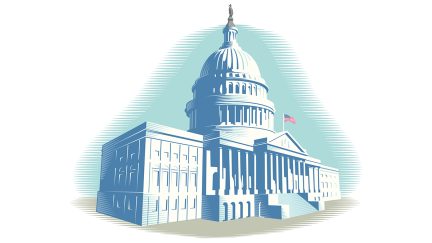Never miss a story — sign up for PLANADVISER newsletters to keep up on the latest retirement plan adviser news.
Beyond Auto
Automatically enrolling participants has become a key part of retirement savings plans, with nearly 62% of plans of over $5 million in assets implementing auto enrollment, according to PLANSPONSOR’s most recent annual DC Plan Benchmarking Survey. Come 2025, the SECURE 2.0 Act will require all plans started after December 29, 2022, to implement automatic enrollment at a savings rate of between 3% and 10% of pay, unless participants choose a different contribution or opt out.
But as pensions go by the wayside, workers expect to live longer and health care costs continue to rise, experts say smart plan design innovations can take plan sponsors beyond auto-enrollment and auto-escalation to incentivize more workers to save more.
Re-enrollment Sweeps
Just because an employee opted out of their retirement savings plan when they initially became eligible doesn’t mean they can’t — or won’t — take part later. Annual or one-time re-enrollments enable plans to revert non-participants, and auto sweeps allow them to up the default deferral rate for participants. Providers like Vanguard and T. Rowe Price have long said that this plan design is a key part of getting more people to save.
One of the biggest challenges that retirement savers face is inertia, says Brian Becker, principal and shareholder of wealth management firm Becker Suffern McLanahan. Most participants aren’t thinking about saving for retirement, so they don’t. They likely won’t change their decision to not contribute on their own.
“If you go ahead and re-enroll a group at a higher percentage, more likely than not they’re going to stick with it,” Beck says.
Re-enrollment sweeps have yet to become a common design feature: Only 10% of plans enroll non-participants automatically each year, according to a survey by the Plan Sponsor Council of America. While re-enrollments are “very effective,” they can be a challenging, heavy lift, Becker says. Clients with his firm, most of which have between 20 and 500 employees, don’t all have a designated human resources benefits specialist who can focus solely on retirement plans, making re-enrollments difficult.
Still, Becker says if his firm is taking a plan over or changing recordkeepers or providers, they suggest re-enrollment or bumping contribution rates.
Financial Coaching and Education
One of the biggest reasons workers say they choose not to join a plan is because they don’t know how to invest, says Karen Casillas, a vice president at financial advisory firm CAPTRUST. But when plans have strong financial wellness programs in which participants can learn about how their retirement savings plans fit into their overall financial picture — including concerns like emergency savings and student debt — it can give them the confidence and knowledge to contribute. That education can come in the form of webinars, emails, online tools and a phone number participants can quickly call to get information on everything from the basics of contributing to after-tax contribution options and Roth in-plan conversions.
“Having that trusted resource for them is outrageously impactful,” Casillas says.
As employers look for more ways to help improve their employees’ overall financial wellness, they’re also recognizing that potential financial wellness programs can incentivize workers to save for their futures. In fact, Casillas says that while plan sponsors previously struggled with clients not seeing the return on investment of financial wellness programs, those programs are now often the first thing prospective clients will ask about when meeting with her firm.
Saving Nudges
Even beyond auto-enrollment, re-enrollment and auto-escalation, plans can nudge employees to save more. Recordkeepers could do a better job of getting participants engaged by collecting email information for all participants and periodically sending them links to online savings calculators, says John Barry, registered principal at LPL Financial. These simple calculators, such as one on Charles Schwab’s website, ask users to input information about their income, expected spending in retirement, age and expected retirement age to let them know if they are putting away enough money for their golden years.
“If they play around with the calculators once or twice a year, they’re going to get on track slowly over time,” Barry says. “It’s just getting them engaged that is always the challenge.”
To make these initiatives effective, participants also need to be able to easily increase their contribution rates. Small plans sometimes only allow those changes semi-annually, but boosting that to quarterly or monthly, can help boost savings, Becker says.
Unsurprisingly, increasing employer matches — and letting participants know of those changes — can also help incentivize savers. That could look like offering any sort of company match if an employer doesn’t already, or if a company is offering 50 cents to the dollar of 6%, increasing that to 50 cents to the dollar of 8% or 10%, for instance.
“Trying to incentivize the participants somehow, some way even if it’s two cents on the dollar up to 6% is better than nothing,” Barry says.
Companies can take creative approaches. For instance, Casillas said she works with one group that is considering removing their match and instead implementing a mandatory nonelective contribution of 6% to give employees the flexibility to contribute more.
Managed Accounts with Participant Interaction
Managed accounts, which are professionally managed accounts that can be customized for participants based on factors like their salary and risk tolerance, can also help increase savings. The managers can take into account a participant’s age, for example, and recommend to the plan sponsor that employees increase their deferral rate based on how much they have currently saved and their timeline to retirement. The sponsor can then implement that change, unless the participants opt out.
“That is very effective,” Becker says, who has clients that offer managed accounts via The Standard, which expanded its managed account offerings earlier this year. “It’s kind of auto-escalating based on what that participant’s plan balance is and where they are from retirement.”
Charles Schwab offers participants ongoing professional management of retirement accounts for a fee, and reported that between 2017 and 2022, 60% of participants increased their deferral rate by nearly 4% after an advice consultation.
You Might Also Like:

Correcting 401(k) Auto-Enrollment Failures

Vanguard: Auto-Enrollment Has Most Significant Role in Equalizing Savings Access





